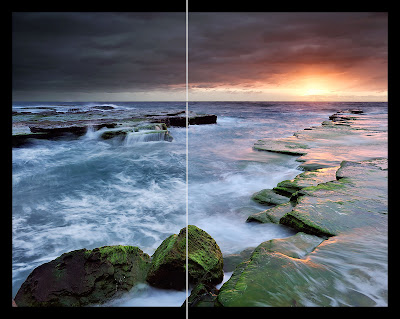So have any of you hot-shots done any of the following by accident?
- Shot on high ISO
- Shot JPEG instead of RAW
- Left your exposure compensation with a bias from your last shoot
- Left your light metering on the wrong setting (like spot meter)
- Forgot to clean your lens (and found later a big fingerprint or dirt splodge on it)
Yeah... made all of these mistakes, so I have developed a "pre-flight check" that I now do relegiously at the start of every shoot. I recommend that you do something similar and it will helpfully stop you making silly mistakes. Here's how my pre-flight check works.
Step 1) Set the camera shooting modes and custom mode first (I have settings for "Normal" and "Landscape Mode"). You must do this first because otherwise all your settings will change if you do it later.... ie. You could do your pre-flight check, and then change your shoot mode and everyhing could be mis-set.
Step 2) I go across the top of my Nikon in sequence
 Quality = RAW
Quality = RAW- WB = Auto (not that impotant if you are shooting RAW)
- ISO = 200 (my starting point)
- Mode = Aperture priority
- Exposure compensation = 0
Step 3) Then I do the back of my camera

- Light metering = matrix
- Focus= centre spot
Step 4) Finally I do the front of my camera

- Bracketing= off
- Focus= manual (most of my landscape work is manual focus)
- Lens = clean and clear of dust.
BP



